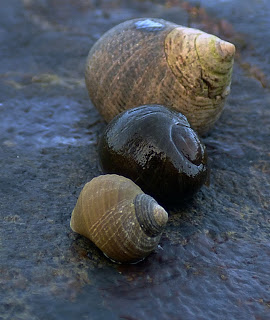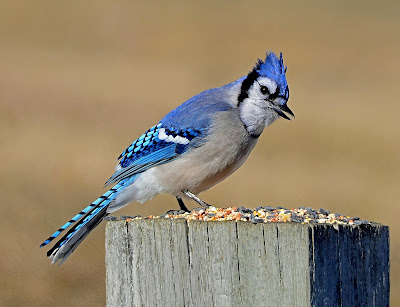NATURE NEWS
Three kinds of periwinkles live in Gulf of Maine
By Sue Pike
yorkweekly@seacoastonline.com
Posted Jul. 19, 2016 at 5:02 PM
There is one local snail that I would bet everyone who lives in coastal New England knows and loves: the common periwinkle. What young person hasn’t picked up a periwinkle from the beach and tried to hum it out of its shell? Who doesn’t think that these are cute snails? If you have been to a local beach and your eyes were open, you undoubtedly saw at least one periwinkle — given how many there are out there they are hard to miss.
What most people don’t know is that there are three snails that live in the intertidal zone in the Gulf of Maine that go by the name "periwinkle." The one most of us know is the common periwinkle (Littorina littorea). You can find these making trails in the sand along beaches, on docksides and on intertidal rocks. Those who venture out into the seaweed-draped rocks of the intertidal might find the smooth periwinkle (also called the northern yellow periwinkle), a small oval yellow or tannish-green periwinkle with the scientific name Littorina obtusata or the even smaller rough periwinkle (scientific name Littorina saxatilis).
The common periwinkle can be identified by its striped tentacles and a spire (the pointy end of the shell) that isn’t as sharp as that of the rough periwinkle, but not as smooth as that of the smooth periwinkle. Smooth periwinkles are very smooth, they have a flattened spire and they can be a variety of colors - solid yellow to striped to brown, colors that all camouflage them nicely in the rockweeds they call home. Rough periwinkles look a lot like common periwinkles but are smaller and bumpier.
A very cool difference between these three winkles is how they reproduce. The common periwinkles release eggs into the sea and these eggs hatch into planktonic larvae that drift around in the ocean until they mature and settle onto intertidal rocks. The smooth periwinkles lay eggs in masses of a jelly-like substance attached to rockweed and these eggs hatch into crawling juveniles. Rough periwinkles retain their eggs within their shells and give birth to live young.
Of these three periwinkles, the most common - the common periwinkle - is the most numerous
and the only non-native. The status of these periwinkles as either non-native or native has been debated for more than 100 years; the most recent DNA studies strongly suggest that these snails were introduced by human activity and are not native. It is thought that common periwinkles were accidentally introduced to New England from the ballast of ships in the early 1800s. Adult periwinkles live on rocks and rocks were used as ballast in ships and most likely carried periwinkles with them.
The smooth periwinkle-Littorina obtusata The common periwinkle is considered an invasive non-native species in the Gulf of Maine. Periwinkles feed by scraping algae off of rocks, seaweed and sand using a specialized mouthpart common to all mollusks - a rasping tongue-like structure called a radula. Because there are so many common periwinkles along the coast they have had a huge effect upon intertidal ecosystems. They have displaced native snails, by preferentially feeding upon faster-growing seaweeds they have caused slower-growing species to dominate tide pools. They are even thought to have reduced the extent of salt marshes in the Northeast by feeding upon the shoots and rhizomes of marsh cordgrass (Spartina alterniflora) - a plant that actively builds salt marshes. In a review of coastal marine invasions Carlton et al (1992 Journal of Shellfish Research) reported that “No introduced marine mollusk in North America has had a greater ecological impact than the periwinkle Littorina littorea, which colonized the Atlantic coast…..and subsequently altered the diversity, abundance and distribution, of many animal and plant species on rocky as well as soft bottom shores.”
Given the abundance of the common periwinkle and the havoc it can wreak in that abundance, one tactic toward controlling them is to eat them. Periwinkles are commercially harvested in New England and sold, primarily, to Europe and Asia. I recommend trying them steamed and dipped in butter - they’re delicious
The striped tentacles mean this is a common periwinkle




Comments
Post a Comment